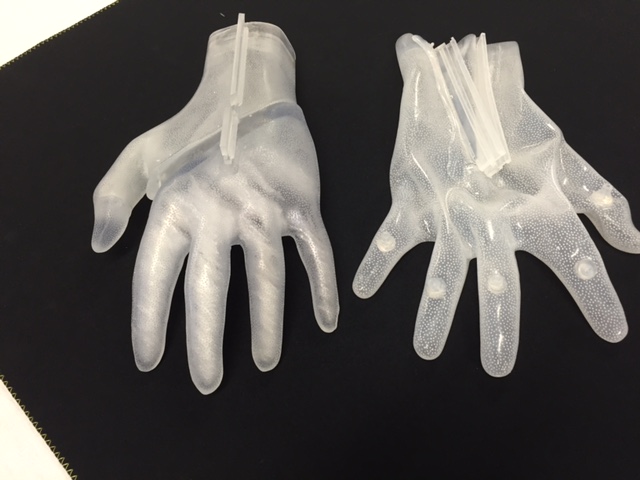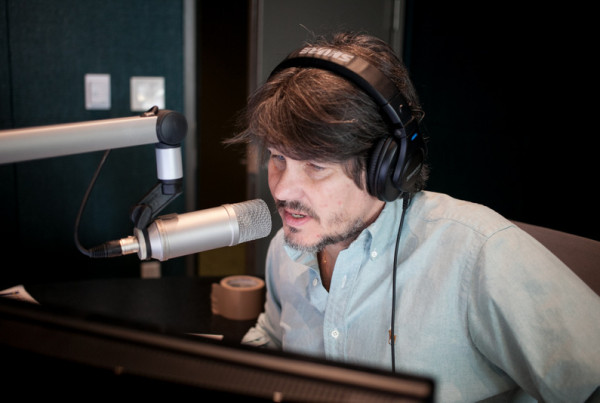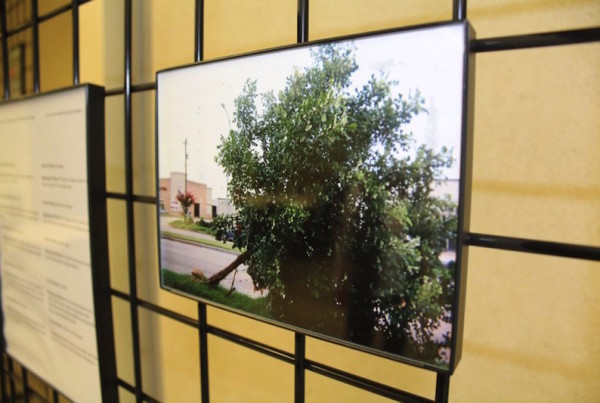This story originally appeared on the Breakthroughs through KERA News.
Treating complex hand wounds often involves wrapping gauze and bandages around the injury to the point of making any movement impossible. The “boxing glove” look is problematic because the joints in the fingers can easily become stiff — making it harder to recover mobility later on. Researchers at the University of Texas at Arlington are developing a specialized glove that can deliver medicine to an injured hand to help speed up healing time and make the process less painful.
If you have a major wound on your stomach, leg or arm, one of the standard treatments is something called negative pressure wound therapy. Sounds complicated, but you essentially just apply a low-level vacuum to the wound.
Muthu Wijensundara, who leads the Biomedical Technologies Division at The University of Texas at Arlington Research Institute, explains the pressure sucks out the wound fluid, increasing blood flow to the site and promoting new cell growth.
The idea of negative pressure wound therapy revolutionized wound care in the 90s, but the technique isn’t new. In Roman times, there were medical personnel whose job it was to suck on wounds. Some people still use “cupping glasses,” which are heated and placed on top of a wound — as they cool, the suction increases.
Today, very low pressure vacuums get the job done on most parts of the body, but what about a wounded hand? Patients need to be able to move their fingers. Wijensundara says attaching gauze, bandages and a vacuum make that difficult.
“During the healing you need to move your joints,” he says. “If you don’t do that you get scar tissue formation, that leads to a deformed hand and hand function gets limited.”
That’s where Wijensundara’s clear, flexible silicon glove comes in. It’s called the REHEAL glove. It looks like something you might use to clean a sink, except there’s an opening that runs along the back of the hand, from the knuckle joint down to the wrist. That’s to help get it on and off without further injuries. And, there are little ports in each of the fingers where you can attach small plastic tubes.
The tubes can suck out extra fluid and deliver medicine without having to unwrap and remove gauze and bandages — which can be painful for patients. Wijensundara says the medicine that flows through the tubes could be antibiotics, wound cleaning fluid, even stem cell treatment.
The smart-glove design process has been a collaboration between the UT Arlington Research Institute and a hand surgeon at the University of Washington in Seattle.
Ryan Landrith, a research scientist who has worked on each prototype of the glove, says what’s most exciting about the idea is its simplicity.
“You see a lot of people focused on research that’s really novel and almost sci-fi sounding. This is a really simple platform to deliver therapies we know work,” he says.
The REHEAL glove will need to go through clinical trials, likely next year. Then, more surgeons would need to try it out on patients.
Dr. Lisa Lattanza, chief of hand, elbow and upper extremity surgery at the University of California San Francisco, says if the REHEAL glove can successfully apply negative pressure, it would be unlike anything on the market. One of her biggest concerns is actually how the patient wearing the glove might react.
“Sometimes when a patient is sitting around and able to look at their wound, they obsess about it and worry about it more, minor changes that we aren’t worried about can provoke a lot of anxiety in the patient,” she says.
Of course, watching your own wound heal could also be intriguing, if you’re in to that sort of thing.















